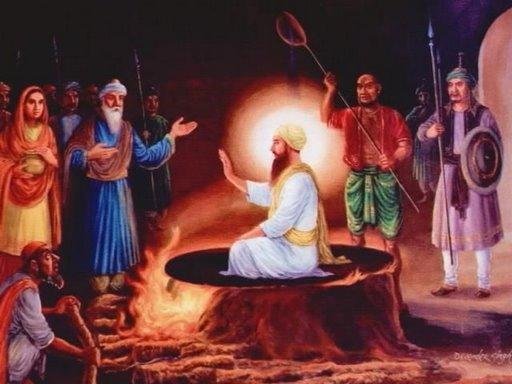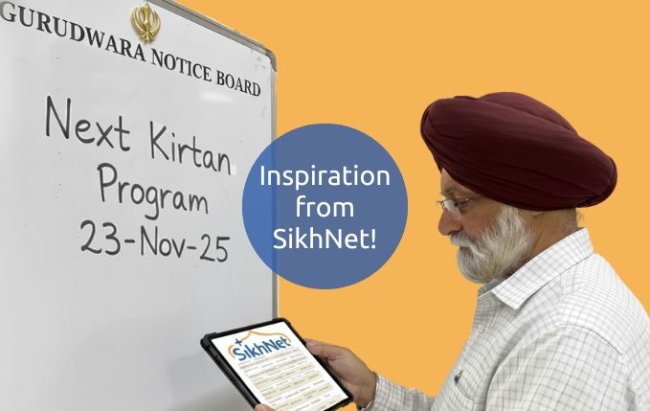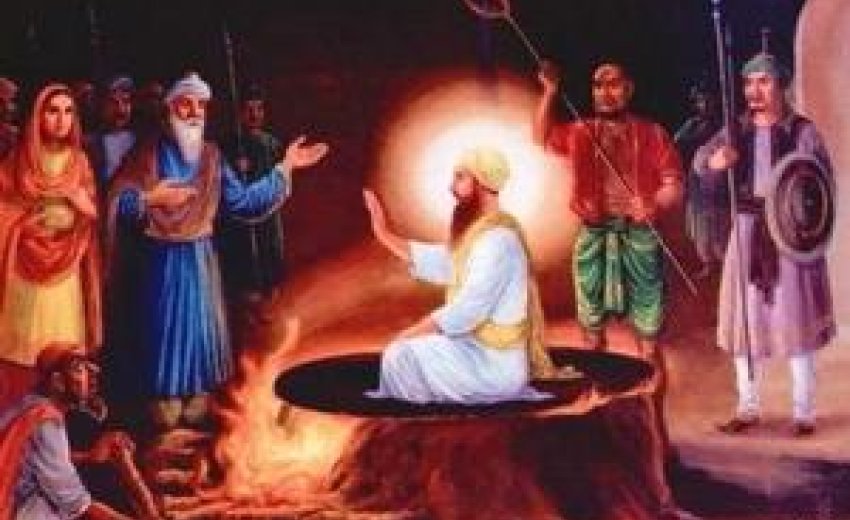 Whenever someone talks of
the fifth Guru, Guru Arjun’s martyrdom it is mostly talked of in terms of Tera
keeaa meetthaa laagai - O Almighty Your will is sweet for me, i.e. I happily
accept it. But this line means that the Sikh or for that matter any one who has
faith in the Almighty accepts Divine will happily.
Whenever someone talks of
the fifth Guru, Guru Arjun’s martyrdom it is mostly talked of in terms of Tera
keeaa meetthaa laagai - O Almighty Your will is sweet for me, i.e. I happily
accept it. But this line means that the Sikh or for that matter any one who has
faith in the Almighty accepts Divine will happily.
The thought of having to sit on on a hot plate with heated sand poured over the head and being put in a boiling cauldron is frightening. But these were not forced on him. In fact he almost asked for the torture - the only way the Mughals seemed to know, to deal with those of other faiths who did not toe their line. It also applied to those who seemed to be threat for Islam, as was the case with the fifth Guru.
Jahangir is on record saying in Tozik-e Jahangiri that he found propagation of
the Sikh faith by the Guru not only attracting HIndus but also the Muslims.
This despite the fact that respected Muslim personalities like Saain Miaan Mir
kept company with the Guru. Anger can truly make people blind
Guru Arjun is called
Shaheedaan de sirtaaj, the crown wearer or king of the martyrs. His martyrdom
set the trend for martyrdoms not only by the ninth Guru or the sons of the
tenth Guru but also of countless Sikhs. All this was by choice and could have
been avoided if they had compromised with the values sought to be inculcated by
the gurus and Gurbani. Fearless-ness is of two types. One is not being afraid
under threat or impending danger. The other is being righteous, doing the right
things and thus have no apprehensions for any retribution
In the case of the fifth
Guru the faith he had in the Almighty was demonstrated by remaining calm in the
face of serious provocations mostly by or at the behest of his elder brother
Baba Prithi Chand. He remained cool even when it was known that Sulahi Khan was
ready to attack the Guru. This event is recorded in Gurbani thus.
Prathme mataa ji patri
chalaavau;
Duti-e mataa due manukh
pahuchaavau.
Trtiti-e mataa kichh karau
upaaiaa.
Mai sabh kichh chhodd-i
prabh tidhai dhiaaia. M: 5, p 371.
The first proposal was to
send a letter.
The second was to send two
people - to dissuade the attacker.
The third was to make
arrangements - protection.
Leaving everything else I invoked
You O Master.
He was vindicated and the
attacker perished on the way.
How is that the Guru did
not feel the pain of all the physical torture?
He answers this thus:
Prathme mittia tan ka
dookh.; man sagal kau hoaa sookh.
Kar kirpa gur deeno nau;
bal bali tis satgur kau jaau. M: 5, p 395.
The first thing that
happens when one lives by Naam - divine virtues and commands, is that physical
pain is not felt. and the mind feels completely at peace.
The guru is kind to impart
awareness of Naam. I adore the true guru..
In the New Testament it is
mentioned that when Jesus was on the cross he felt helpless and prayed ”O God
why have you forsaken me?” But when people tried to sympathise with Guru Arjun
for his suffering, he displayed high spirits saying
Dukh naahi sabh sukh hi hai
re ekai eki netai.
Buraa nahi sabh bhalaa hi
hai re haar nahi sanh j-etai. M: 5, p 1302.
There is no pain; it is all
comfort and peace because my eyes see only the One Master
There is none evil; all are
good; I am winning not losing.
Such is the Charrdi kalaa
or high spirits that the Khalsa inherited and displayed.
We Sikhs are rightly
castigated for not having made the world know of the spirit and examples of
sacrifice by the sikh Gurus and their followers. People say One Jesus died
according to the New Testament and his followers made this a major plank of
their faith, but the Sikhs have not done so despite innumerable sacrifices in
the spirit of -
Soora so pahchaaniai jo
larai deen ke het.
Purja purja kat mari kab-hu
na chhaaddai khet. Kabir, p 1105
One should call a warrior
such a person who fights for the sake of the poor/hapless.
S/he may be cut into pieces
but never leaves the field.
Let us do it now.
The Sikhs have not
advertised but have truly followed the example set by Guru Arjun, the fifth
Guru.

